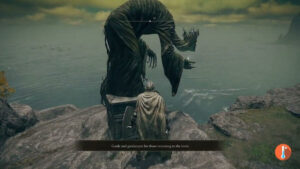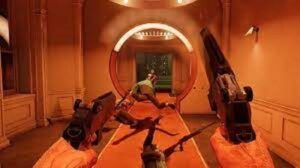Just like any other game Minecraft also requires updates to fix the bugs, and glitches and add new features. Sometimes when your Minecraft Native Launcher starts to update the game, it gives you an error message known as Unable to update the Minecraft Native Launcher.
Most gamers don’t know how to update the Minecraft Launcher because the process is usually automatic. In case the update process fails or gets stuck and you see Unable to update the Minecraft Native Launcher. Don’t worry!
If you’re one of those users experiencing the problem, this article contains all the fixes and suggestions to help you get rid of the error.
What “Unable to update the Minecraft Native Launcher” Error Shows Up?
Many underlying causes can break the Launcher’s update process. Below we have mentioned the most common causes:
- Missing Admin Privileges: The launcher needs admin rights to build and update, just like you need tools to craft. Without them, Windows throws up a roadblock.
- New Launcher Hiccups: The recent launcher update for Windows 10/11 can sometimes clash with old files, creating update chaos.
- Overzealous Security Software: Your antivirus might see the launcher’s update efforts as suspicious, leading to disruptions.
- Corrupted Minecraft Files: Imagine a broken pickaxe! Missing or corrupted launcher files can hinder its ability to function and update.
- Windows Update Woes: While updates often bring improvements, they can occasionally introduce glitches that affect your launcher.
How To Fix Unable to Update the Minecraft Native Launcher” Error on Windows 11/ 10 PC
Now that you know the suspects let’s fix the problem.
1. Reset/Reinstall Minecraft
Let’s assume the possibility that the Minecraft installation on your computer is malfunctioning. This process involves completely removing the current installation, including saved files, and then initiating a fresh installation to address the problem.
the steps to reset the Launcher are different for Windows 11 & 10 OS. Hence we have provided a table so that you can easily understand the process for your concerned OS.
| For Windows 11 | For Windows 10 |
|---|---|
| 1. Right-click on the Windows button from your taskbar or press Win + X. | 1. Right-click on the Windows button or press Win + X to open a menu. |
| 2. Click on “Installed Apps.” | 2. Select “Apps and Features.” |
| 3. In the search box, type “Minecraft.” | 3. In the search box, type “Minecraft.” |
| 4. Click the three dots beside the launcher and select “Advanced Options.” | 4. Click on the “Minecraft Launcher” entry and choose “Advanced Options.” |
| 5. Scroll down and select “Reset.” | 5. Scroll down and select “Reset.” |
| 6. Click “Reset” again and allow Windows to reinstall the program. | 6. Click “Reset” again and permit Windows to reinstall the program. |
| 7. Launch the application and check if the issue has been resolved. | 7. Launch the application and check if the issue has been resolved. |
If the problem persists, you have to completely remove the launcher, clear its saved files, and then reinstall it from the Microsoft Store.
Follow these steps:
- Press the Win key + I shortcut to start the Settings application.
- Click Apps after Settings appears.
- Click Installed Apps if you’re running Windows 11.
- Go to the search box and type “Minecraft.”
- If you’re on Windows 10, click the Minecraft Launcher entry and select Uninstall. If you’re on Windows 11, click the three dots beside the launcher and click Uninstall.
- Follow the on-screen instructions to remove the app.
- Next, start the Run dialog window by hitting the Windows and R keys simultaneously.
- Type “%appdata%” (without the quotes) into the text box and tap Enter.
- After the Appdata folder shows up, open the Roaming folder.
- Locate the “.minecraft” folder and delete it. If you want to delete it permanently, hold the Shift key while you select Delete or click the Delete button. Click Yes in the confirmation dialog.
- Now, restart your computer, open the Microsoft Store, and search for the Minecraft Launcher.
- Make sure you’re logged into the Microsoft Store using your Minecraft account. That way, the Store will recognize that you own the game.
- Click the Get button.
- Run the installed program to confirm that the “Unable to update the Minecraft Native Launcher” error no longer comes up.
Related: How to Fix Minecraft Keeps Crashing on PC
2. Repair the Minecraft Launcher
If the Windows PC keeps showing the “Unable to update the Minecraft Native Launcher” notification then it is because of the corrupted or broken files. So, repairing the launcher can fix the issue.
As Windows has features that allow us to repair files for any installed program that is downloaded from the Microsoft Store. We will use it to repair missing or corrupt files.
Follow these steps to repair Minecraft through the Control Panel:
- Use the Win + R shortcut to launch the Run dialog box.
- Type “appwiz.cpl” into the Run text box and hit Enter or click OK.
- After the Programs and Features window opens, scroll through your programs and right-click Minecraft.
- Click Repair.
- Follow the instructions that appear to repair the game.
- Now, restart your computer and run Minecraft.
If you have installed the launcher from Microsoft Store then follow these steps:
- Right-click the Windows button from your taskbar or press the Win + X hotkey.
- Click Installed Apps if you’re running Windows 11 and Apps and Features if you’re running Windows 10.
- Go to the search box and type “Minecraft.”
- If you’re on Windows 10, click the Minecraft Launcher entry and select Advanced Options. If you’re on Windows 11, click the three dots beside the launcher and choose Advanced Options.
- Scroll down and select Repair.
- After Windows completes the repair process, restart your computer and try running the program to check for the “Minecraft launcher not updating” problem.
3. Repair Windows’ Gaming Services
As an additional solution, consider repairing Windows’ Gaming Services, which may contribute to resolving the issue. Follow these steps:
- Return to the Installed Apps (or Apps & Features) window using the appropriate path based on your Windows version.
- In the search box, type “Gaming Services” to locate the app.
- Select the Gaming Services app and click on “Advanced options.”
- Scroll down in the Advanced options menu and click on “Repair.”
4. Disable Your Antivirus Software
While explaining the cause we mentioned that antivirus software can prevent the update process trigger the “Unable to update the Minecraft Native Launcher” error.
You can fix this issue by disabling your antivirus. Luckily, all antivirus tools have the means or options to disable the security programs.
In case you are solely relying on Windows Security for your computer’s protection then follow these steps:
- Open the Start menu, type “virus,” and launch the Virus & Threat Protection utility.
- Scroll down and click Manage Settings.
- Turn off Real-Time Protection.
Now, restart Minecraft and check for the problem.
If the problem goes away then you have to decide either to change your Antivirus tool or at least turn it off while playing Minecraft.
5. Create an Exception for Minecraft
It’s risky to keep your antivirus disabled forever. So another reasonable option is to add Minecraft to your antivirus’ Whitelist.
When you add Minecraft to the whitelist your antivirus will no longer bother or disturb it.
The instructions may vary but in most cases, this feature is known as Exemption or Exclusion.
When you see the option to whitelist or exempt a program, do well to choose the folder option. That way, you’ll prevent the antivirus program from touching any of Minecraft’s files and components.
These steps are mentioned for those users who rely on Native Windows Security.
- Open the Start menu, type “virus,” and launch the Virus & Threat Protection utility.
- Scroll down and click Manage Settings.
- Next, go to the bottom of the Virus & Threat Protection Settings page and click “Add or remove exclusions.”
- Now, browse to the “.minecraft” folder, select it, and click the Select Folder button. You can find the Minecraft folder at C:\Users\YOUR_USERNAME\AppData\Roaming.
- You can now check if you can update the Minecraft Launcher without issues.
6. Uninstall a Problematic Update
If you are sure that the problem only started after you installed Windows update then you need to remove that patch from your OS.
Making sure that your PC remains updated is crucial but it can also cause a problem. So follow these steps to uninstall it:
- Use the Win + R shortcut to launch the Run dialog box.
- Type “appwiz.cpl” into the Run text box and hit Enter or click OK.
- After the Programs & Features page appears, go to the left sidebar and click View Installed Updates.
- If you’re on Windows 11, you’ll be redirected to the Settings page. If you’re on Windows 10, however, you will see your installed updates and the dates they were installed on the Programs and Features page.
- Uninstall the update causing the problem and check if the “Minecraft launcher not working” issue persists.






